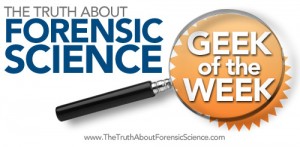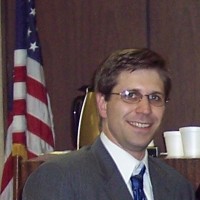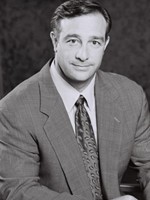 The Forensic Science Geek of the Week
The Forensic Science Geek of the Week
This week’s “www.TheTruthAboutForensicScience.com Forensic Science Geek of the Week” honors goes to:
THERE ARE ACTUALLY TWO AS TOGETHER THEY GIVE THE PERFECT ANSWER
KELLY CASE, ESQUIRE and MICHAEL DYE, ESQUIRE
KELLY CASE, ESQUIRE, www.TheTruthAboutForensicScience.com co-Forensic Science Geek of the Week!
Congratulations to our winner! All hail the www.TheTruthAboutForensicScience.com co-Forensic Science Geek of the Week!!!
About our co-winner:
Criminal defense lawyer Kelly W. Case graduated from Tulane University School of Law in 1991. He began his legal career as a prosecutor with the Galveston County Criminal District Attorney’s Office in November 1991. In 1995, he left that office to dedicate his practice to defending people accused of crimes.
Kelly W. Case is Board Certified in Criminal Law by the Texas Board of Legal Specialization. He is a frequent lecturer at National, State and Local defense attorney seminars. He is a certified practitioner in the coordination exercises used by the police to determine intoxication, called the “Standardized Field Sobriety Tests” or “SFST’s”. He has written articles on defending DWI cases where a suspect’s blood has been drawn and frequently teaches seminars on this subject as well as attending more than twice the amount of required Continuing Legal Education classes.
He is an active member of several organizations including the National College for DUI Defense, National Association of Criminal Defense Lawyers, Texas Criminal Defense Lawyer’s Association, Texas Trial Lawyers Association, The College of the State Bar of Texas, Harris County Criminal Lawyer’s Association, Montgomery County Criminal Lawyer’s Association and the Galveston County Criminal Lawyers Association. He is licensed to practice in the United States Supreme Court, 5th Circuit Court of Appeals, Federal District Court for the Eastern and Southern Districts of Texas as well as all Texas state courts of law. He is death penalty certified and a member of the qualified list of attorneys designated to accept representation for those accused of Capital Murder where the death penalty is sought in the Second Administrative Region of Texas. He is one of 100 lawyers in the Houston metroplex area selected to the Criminal Justice Act Panel assigned to provide indigent defense to those persons accused of federal criminal violations.
KELLY CASE is Week 10’s www.TheTruthAboutForensicScience.com co- Forensic Science Geek of the Week!

MICHAEL DYE, ESQUIRE, www.TheTruthAboutForensicScience.com co-Forensic Science Geek of the Week!
Congratulations to our winner! All hail the www.TheTruthAboutForensicScience.com co-Forensic Science Geek of the Week!!!
About our co-winner:
Michael Dye, Esquire completed his undergraduate studies at Gardner-Webb University in Boiling Springs, North Carolina. In August of 1998, Mr. Dye received his B.S. in Business Administration. While attending Gardner-Webb University, Mr. Dye was a member of the wrestling and cross-country teams.
Mr. Dye’s legal studies began in 2000 at Nova Southeastern University where he was a member of the ILSA Law Journal. During law school, Mr. Dye held several criminal law related jobs including a non-attorney position working with the Miami-Dade County Public Defender’s Office researching juveniles transferred to the adult court system. Additionally, Mr. Dye was a law clerk for a prominent South Florida criminal defense attorney. Mr. Dye graduated from law school in May, 2003.
Upon graduation from law school, Mr. Dye was employed with a leading plaintiff’s securities litigation law firm. Mr. Dye decided to pursue his passion in criminal law and opened his own firm, Michael A. Dye, P.A., in December of 2004. He is now partners with Jane Weatherly, Esquire.
In addition to being licensed in three jurisdictions, Mr. Dye is a member of several professional associations. Mr. Dye is a member of the National College of DUI Defense, the North Carolina Bar Association, and the Criminal Law Section of the Florida Bar.
In April of 2006, Mr. Dye was admitted to the North Carolina State Bar. Mr. Dye actively practices law and maintains an office in both North Carolina and Florida. Although Mr. Dye practices in all areas of criminal defense, handling cases ranging from traffic offenses to capital murder, his primary area of practice relates to serious drug offenses and DUI’s.
Congratulations to our winners! All hail the www.TheTruthAboutForensicScience.com Forensic Science Geeks of the Week!!!
See the challenge question that our winners correctly answered.
Our winners combined to answer the question correctly. Please visit the www.TheTruthAboutForensicScience.com FaceBook fan page.
Our Geeks of the Week answered:
Keely Case, Esquire answered:
Top picture is bite matching involving dentist or oral surgeon, that has made an impression from the bite mark.
Bottom picture is template of human bite and tooth anatomy.
This “science” has huge limitations, mainly without knowing the actual bite pattern and only using human body bruising as the template, it is almost impossible to develop an accurate mold of the tooth structure. It’s like using jello to make a mold. If a suspect teeth and jaw mold is taken and appears to match, it is very difficult to know whether that is an actual match or an approximation. Junk science at its finest.
Michael Dye, Esquire answered:
I got this…..The field of science is called “forensic ondontology.” It is similar to finger print analysis in the sense that it assumes that the ridges and indientations along the biting edges of an individuals teeth are all different. Which is the first assumption that is wrong. The picture above is a casting of the “suspects” teeth which are then compard to the bitemark on the victim. There are several problems with this “science.” One is the healing process. When an injury like that occurs, there is, for lack of a better discription, collateral damage to the soft tissue surrounding the bite mark. Brusing, cutting from movement during the attack and the healing process skew the results. The casting is usually not compared against the actual injury, but is superimposed after being scanned into a computer, which is similar to photoshop, which is a huge problem for me because I can photoshop the hell out of things.
Additionally,the bitemark pattern usually comes from a photo to create the image which can cause issues with the clarity of the photo, the resolution, angles, lighting etc. The length of time between the attack and the photo will drastically alter the bite mark pattern althought the govt now claims to be able to do some sort of retrograde extrapolation on the bite mark to insure that the overlay is exactly the same as the bitemark when it occurred. In most cases time periods are approximate, so ***cough*** ***cough*** bullshit. Then there is the whole problem we are having down here in NC with the SBI. Since it is basically photoshop software, the tech can make it fit.
So issues: 1) Time of injury; 2) movemant during injury; 3) healing process; 4) assumption that everybody heals the same; 5) false assumption of all teath bite patterns being unique, 6) photo qualiy problems 7) photoshoped evidence,
retrograde extrapolation of the healing process.
Forgive my typo’s.
The Hall of Fame for the www.TheTruthAboutForensicScience.com Forensic Science Geek of the Week:
Week 1: Chuck Ramsay, Esquire
Week 2: Rick McIndoe, PhD
Week 3: Christine Funk, Esquire
Week 4: Stephen Daniels
Week 5: Stephen Daniels
Week 6: Richard Middlebrook, Esquire
Week 7: Christine Funk, Esquire
Week 8: Ron Moore, B.S., J.D.
Week 9: Unclaimed, check it out and claim the honor
Week 10: Kelly Case, Esquire and Michael Dye, Esquire
Next week’s challenge will be posted on Sunday morning at 10 am EST. I AM LOOKING FOR SUGGESTIONS please email me at justin@TheMcShaneFirm.com



